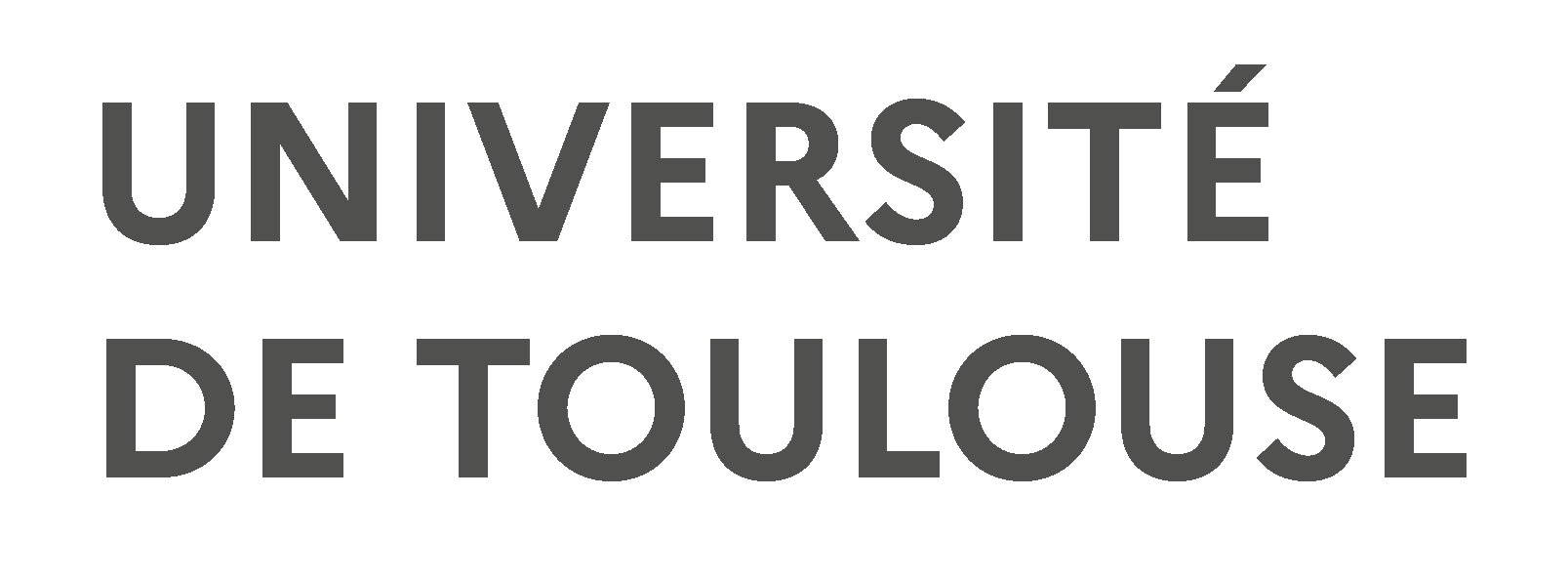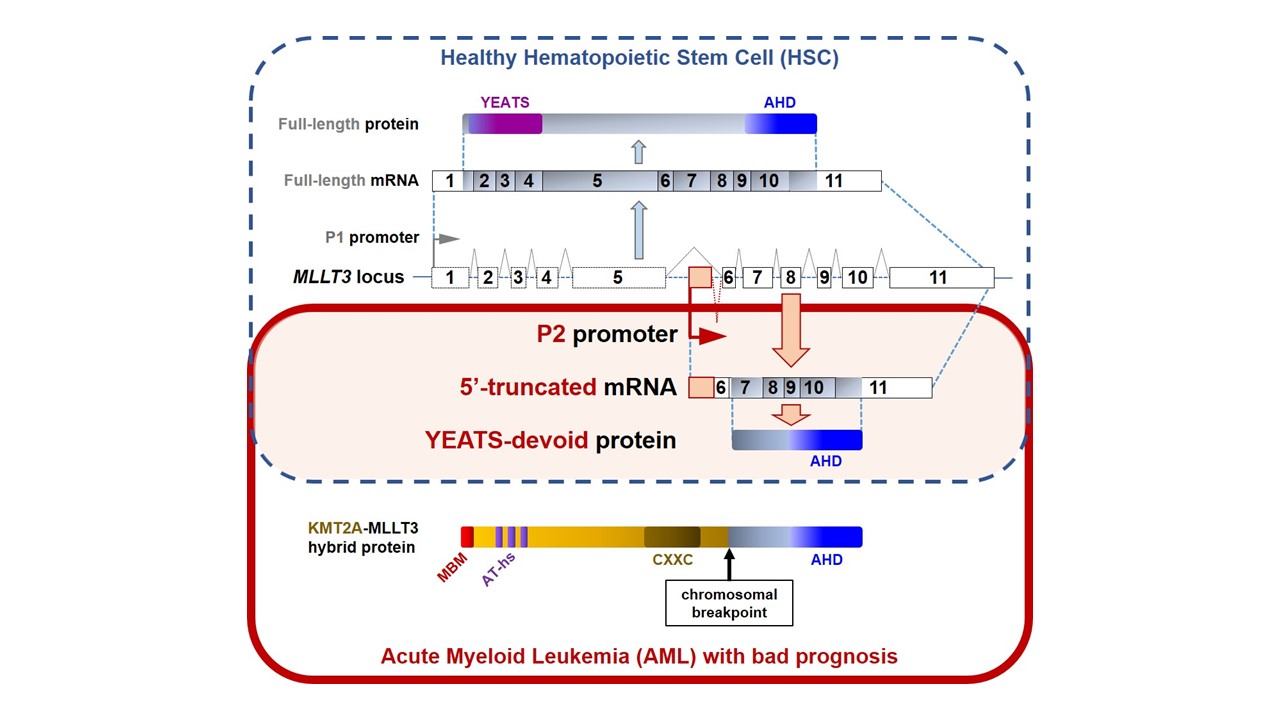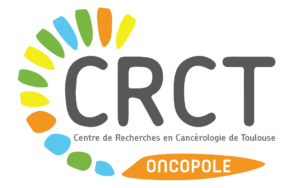A strong internal promoter drives massive expression of YEATS-domain devoid MLLT3 transcripts in HSC and most lethal AML.
Hematopoiesis,
Acute myeloid leukemia,
genetic alteration,
alternative transcription,
MLLT3.
Stéphane Pyronnet – R’n Blood : RNA Biology in Hematologic Tumors
The MLLT3 gene controls the formation of all blood cells. However, it is also one of the most frequently altered genes in acute myeloid leukemia, causing the disease to develop. This article describes a new mechanism that challenges everything we thought we knew about it.
The MLLT3 gene plays a key role in maintaining the hematopoietic stem cell pool from which all blood cells originate. Until now, it was thought to be transcribed into an mRNA and then translated into a protein containing two important functional domains: the N-terminal YEATS domain and the C-terminal AHD domain. It is also the site of a genetic alteration (chromosomal translocation) causing a significant number of acute myeloid leukemia. This alteration cuts the gene in two, fusing its C-terminal part (containing the AHD domain) to another gene called KMT2A. This results in the abnormal appearance of a fusion gene and hence of a fusion protein called KMT2A-MLLT3. This chimeric protein acquires new, undesirable functions and is responsible for the malignant transformation.
The development of new bioinformatics tools in close collaboration with Prof Thérèse Commes’ BIO2M group at the IRMB in Montpellier has turned these concepts on their head (tools described in Bessière et al Genome Biol 2024;25(1):266; and made available via the Transipedia.fr web interface). We discovered that in fact the hematopoietic stem cell essentially expresses a shorter form of the MLLT3 gene thanks to an internal P2 promoter (see figure). The protein produced is devoid of the YEATS domain and contains only the AHD domain, which can be fused to KMT2A in certain cases of acute myeloid leukemia (see figure). What’s more, a significant number of leukemia patients (~15%) abnormally express this short form of MLLT3, independently of the genetic alteration leading to KMT2A-MLLT3 fusion. We also found that patients expressing the truncated form of MLLT3 have the worst prognosis.
Discover the published article
Cancer Commun (Lond). 2025 Mar;45(3):380-385.doi: 10.1002/cac2.12650. Epub 2025 Jan 3.
A strong internal promoter drives massive expression of YEATS-domain devoid LLT3 transcripts in HSC and most lethal AML
Chloé Bessière, Ahmed Zamani, Romain Pfeifer, Sandra Dailhau, Camille Marchet, Benoit Guibert, Anthony Boureux, Raïssa Silva Da Silva, Nicolas Gilbert, Thérèse Commes, Fabienne Meggetto, Christian Touriol, Christian Récher, Marina Bousquet, Stéphane Pyronnet
Collaborations et partnerships
Laboratoire BIO2M, IRMB, Montpellier
Financement : LabEx TOUCAN

Toulouse Cancer Research Center (Oncopole)
Toulouse - FR
Follow us on social network
Contact us
+33 5 82 74 15 75
Want to join
the CRCT team ?




